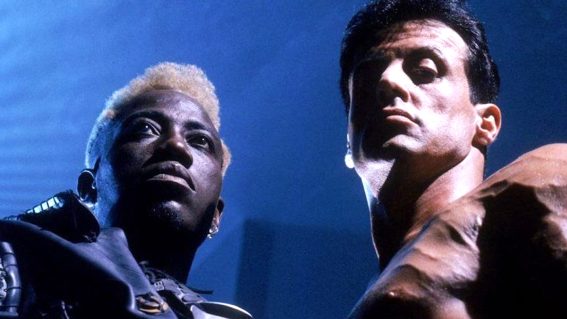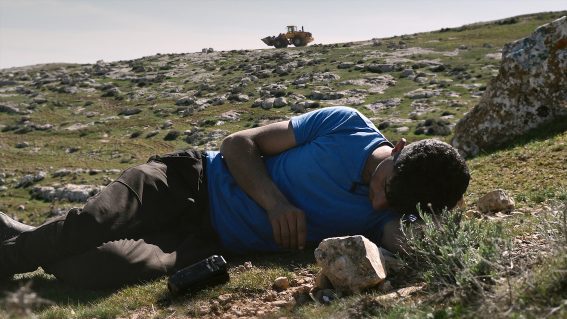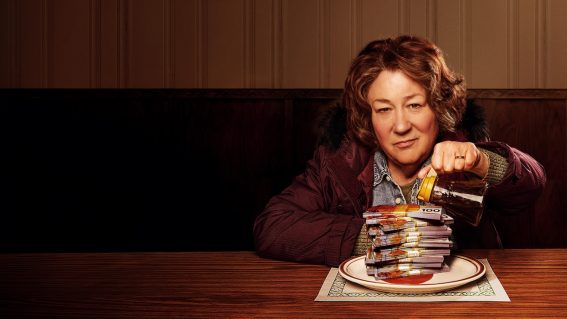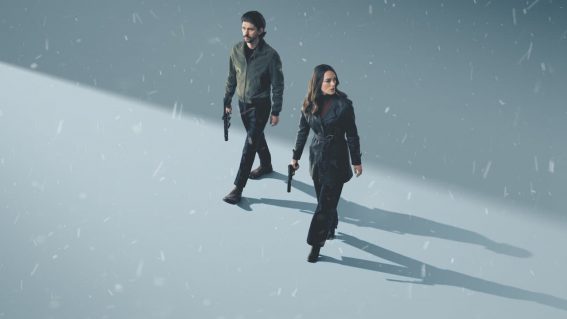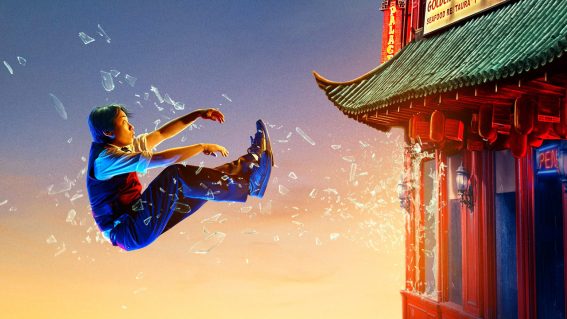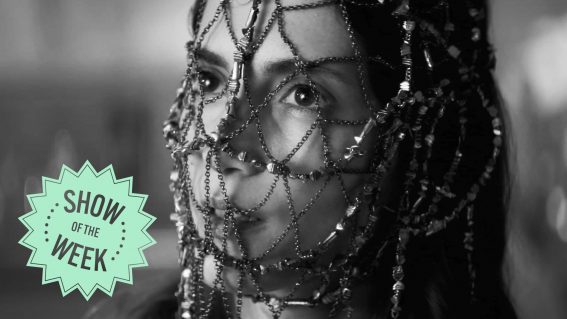A look back at 2024’s NZ film releases, from prestige cinema to weirdo gems
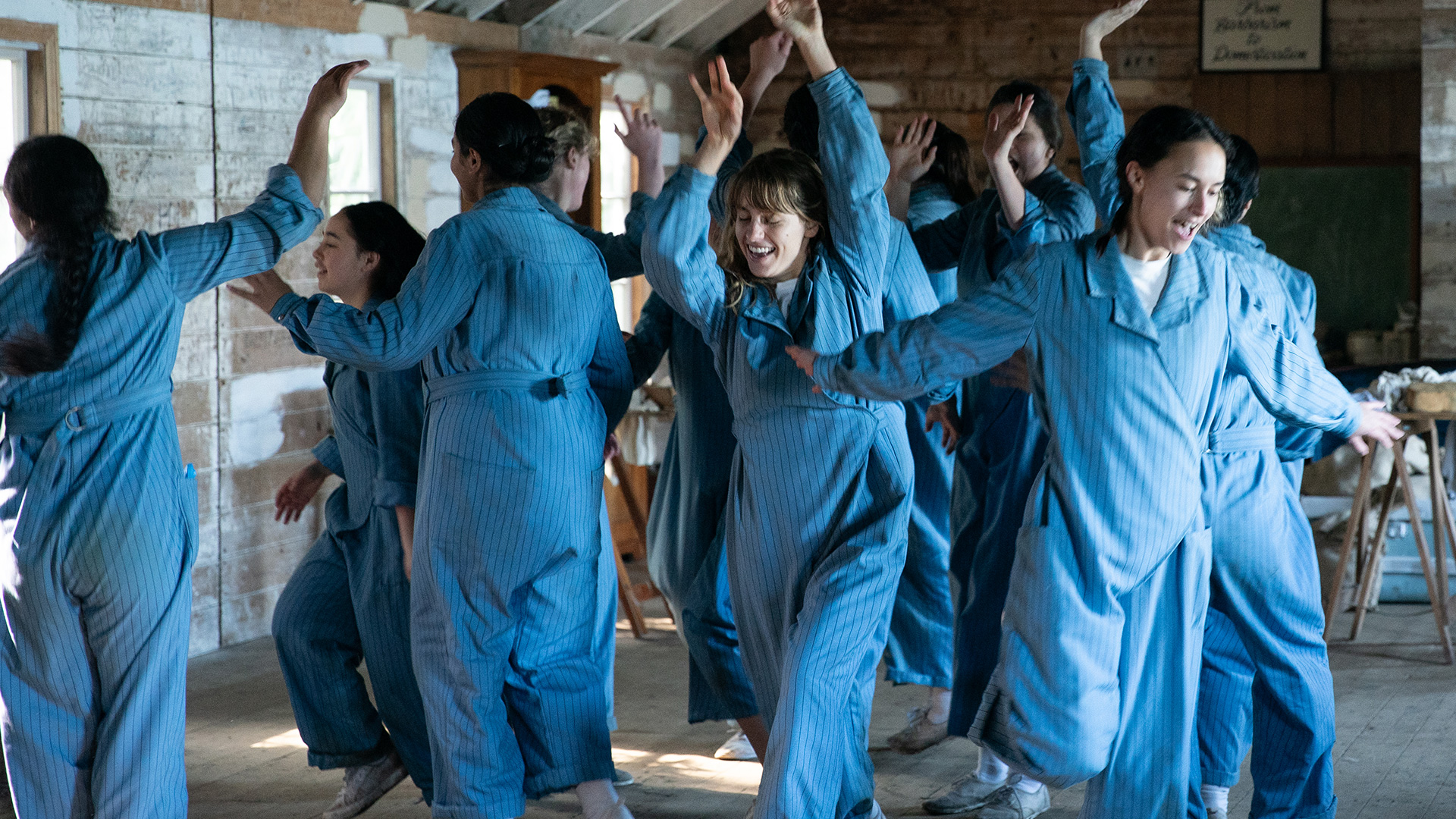
Liam Maguren looks back at the year that was 2024 for all the major NZ film cinema releases.
It’s been a tough year for cinema. Blockbuster flops of April release The Fall Guy and May’s Furiosa sparked a flurry of ‘Is Cinema Dead!?’ reckons that were ultimately cushioned by June’s juggernaut hit Inside Out 2. Still, the 2024 box office has felt the combined pains of COVID hangovers, streaming’s dominance, terrible economic conditions, and the Hollywood clogging caused by last year’s writers strike.
In terms of box office, it’s not a controversial thing to say that cinema Aotearoa has suffered alongside it. And that’s a damn shame, because on the quality and quantity side of things, it’s been a heavy-hitting year for NZ film.
For that reason alone, it’s worth looking back at all of 2024’s major NZ cinema releases. This is not an exhaustive list, strictly covering Jan-Nov releases that saw some limited or general release in multiple regions, but it is a celebratory one.
And if you’re a Flicks Member, make the most of that watchlist button for all the films you want to keep on your radar.
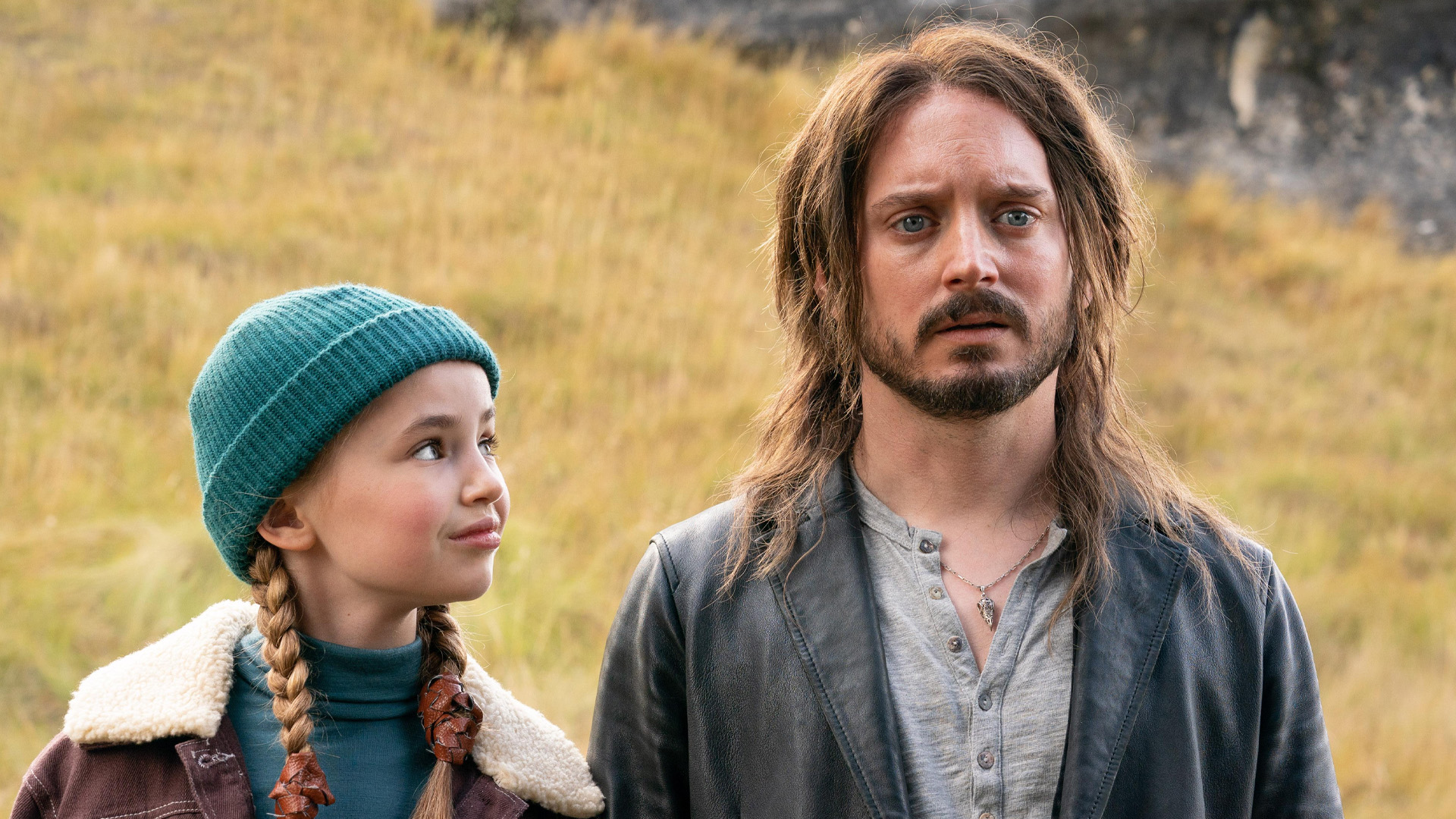
Bookworm
For his second directorial feature film, New Zealand cinema mogul Ant Timpson pulled a handbrake turn from the grisly black comedy of Come to Daddy into the realm of a family adventure. And he did it so swiftly, casting his ol’ mate Elijah Wood and star-on-the-rise Nell Fisher (who we’ll see again in the new season of Stranger Things) as the dad-daughter duo who power this heart-filled search for the Canterbury Panther.
When I wrote about it, I mentioned how I was particularly taken by the film’s “type of edginess that feels sadly lost in the modern family film landscape.” Speaking to Flicks editor Steve Newall, Timpson elaborated on this and Wood’s semi-pathetic illusionist character: “We wanted to make a wilderness movie… We wanted to put someone under a lot of duress and kind of peel back layers of male insecurities for comedic effect.”
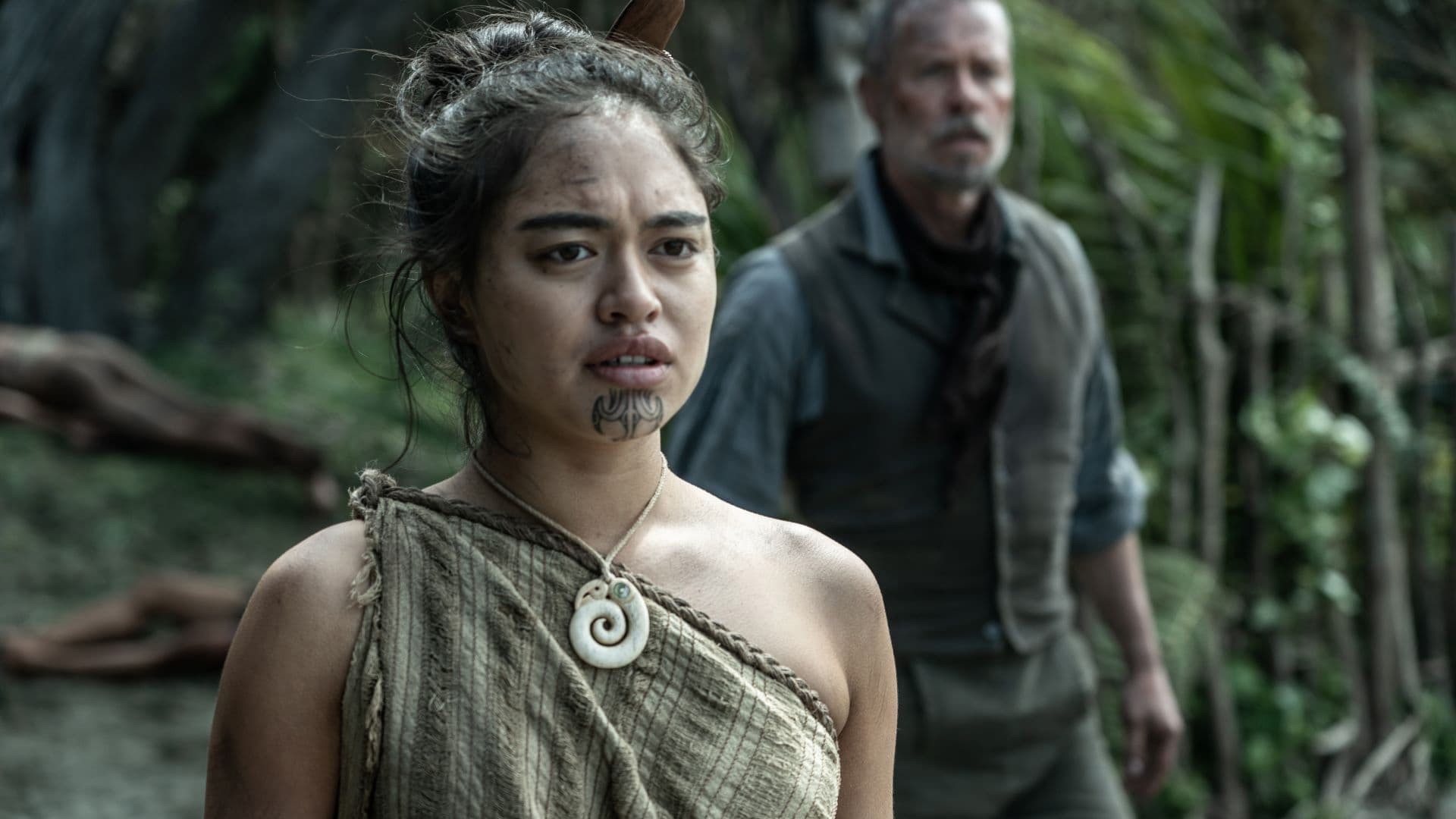
The Convert
Releasing in March, the great Lee Tamahori delivered perhaps NZ film’s heftiest production of 2024 with this historical epic. Headed by Guy Pearce, who plays a lay preacher in 1830s Aotearoa, The Convert illustrates the bloody horror of The Musket Wars with its fictional tale of warring iwi, powered by excellent performances from Tioreore Ngatai-Melbourne, Antonio Te Maioha and Lawrence Makoare.
To quote my own review, the film “weaves a strong net of spectacle and sorrow,” and would end up being the perfect companion piece to June release Ka Whawhai Tonu (more on that later). The more important comments about the film, however, come from Tamahori, who spoke to Steve Newall about his deep interest in that period of time and his powerful partnership with super-producer Robin Scholes.
“I’ve always told myself, even before I started making movies, that I wanted to make three films in New Zealand, minimum. I didn’t want to make a lot more, but if I made three films in New Zealand, they better be good ones because it’s my home audience. It’s my patch.”
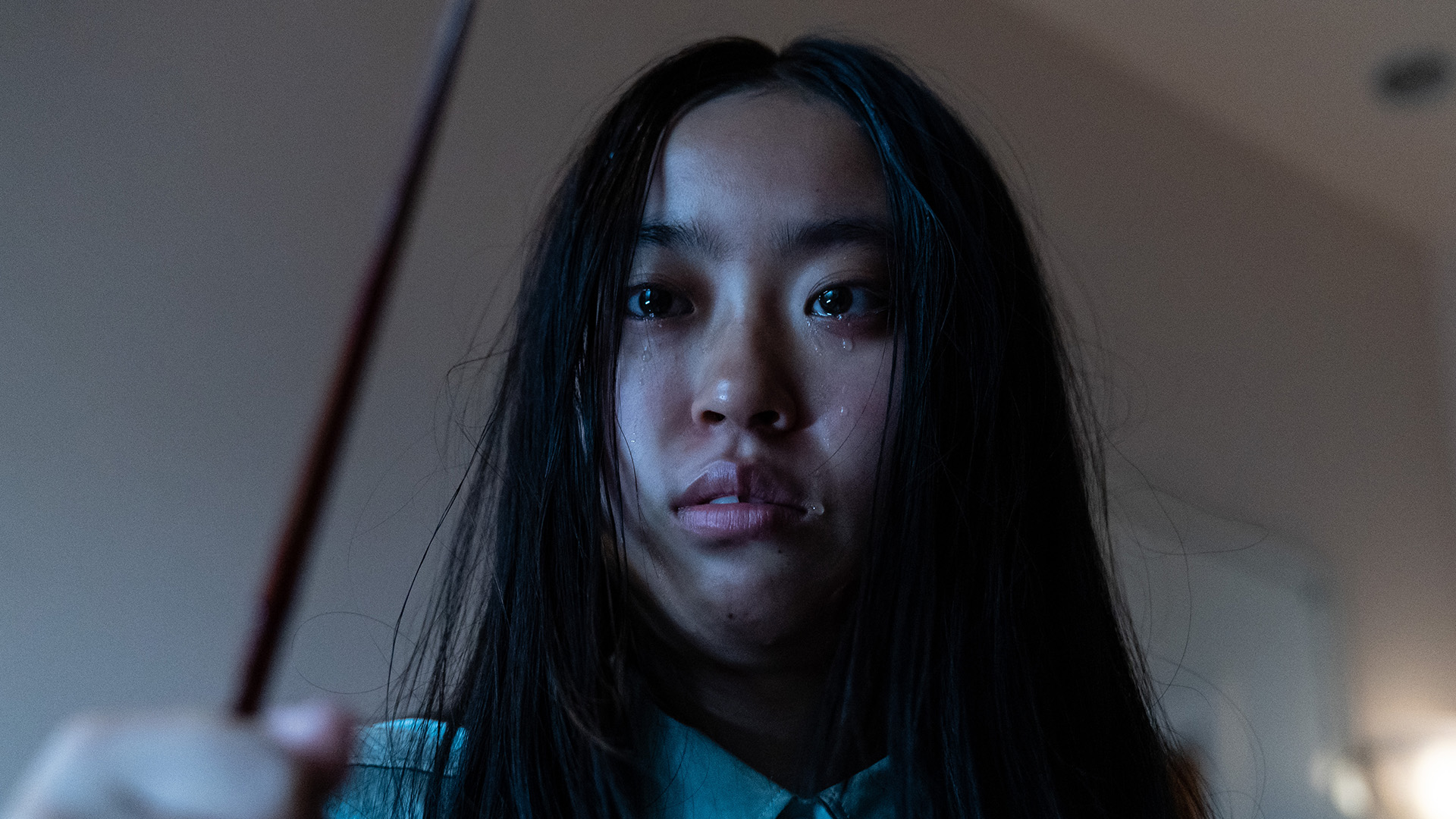
Grafted
This nasty local body horror made for a neat pairing with this year’s cult hit The Substance: both films played at NZIFF before releasing in September, they touch on the ridiculousness of beauty standards in different ways, and the two films have righteously gross endings. The story centres on a Chinese student looking to further her late father’s skin grafting work at a prestigious New Zealand University, but when she to succumb to the pressures of popularity, her thesis offers a bloody solution to fitting in.
Steve Newall caught the film at NZIFF, calling it a “serviceable, but not standout, Aotearoa genre effort.” I agreed: “Despite a fantastic opening and grisly ending, this unique take on the body horror genre felt like it pulled too many of its thematic punches…” We also praised the gore. He called it “tasty.” I said, “ew yuck.”
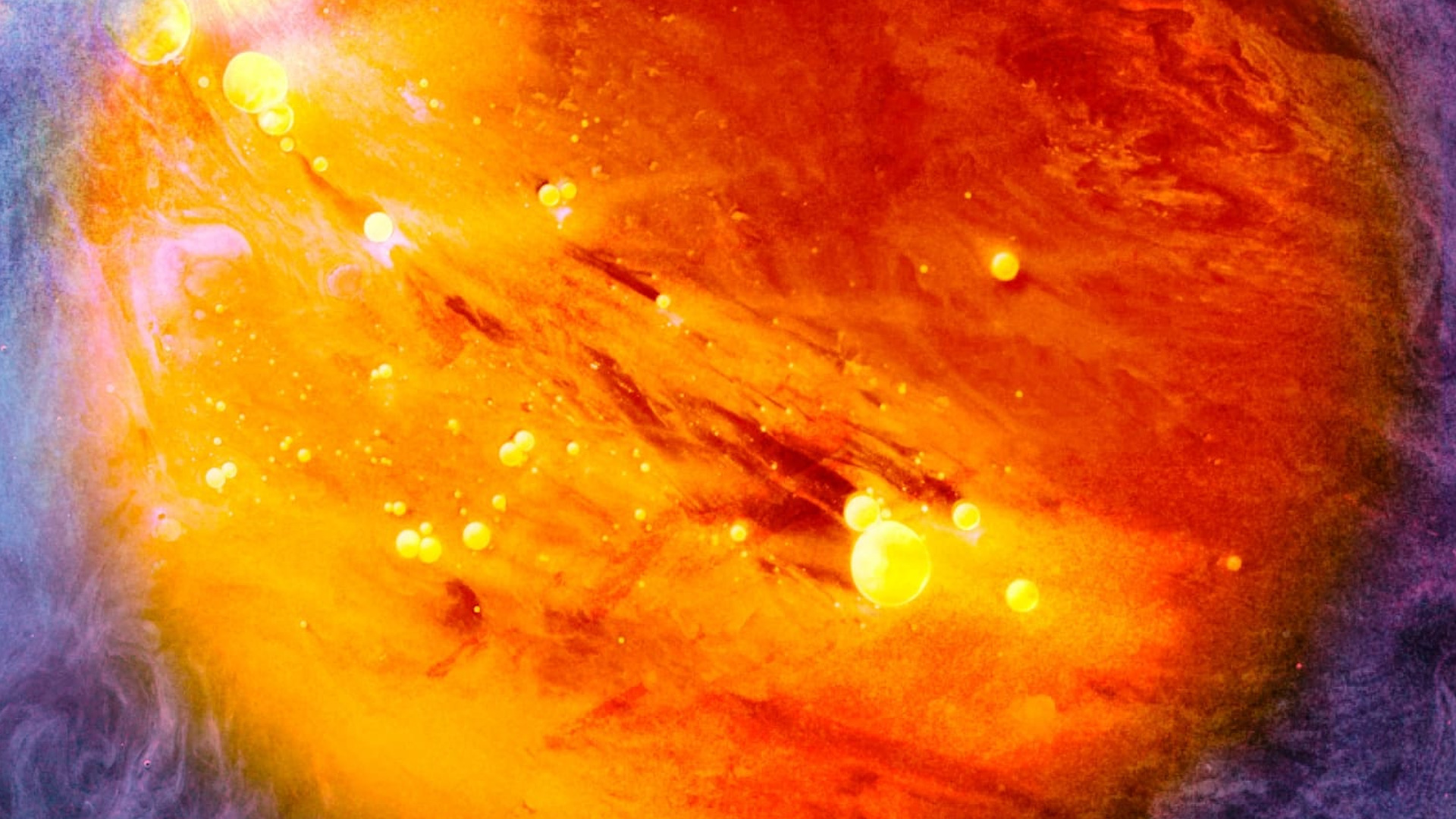
Gut Instinct
Full disclosure: I did the 2D animation for this film. You’d think, then, it’d be easy for me to succinctly describe writer-director-editor-human-Swiss-Army-knife filmmaker Doug Dillaman’s second feature. But this one’s a true oddity: a cinema-designed, faux-public service audiovisual purification programme (made with buzzy visuals and free-to-use archival materials) where the audience is the main character, set in a post-apocalyptic world where microscopic invading aliens have controlled our minds via our guts.
I’ve got no opinions to share—conflict of interest ‘n’ all that—but here’s one from Alex Casey, writing for The Spinoff’s Rec Room, saying it was “truly unlike anything I’ve seen in a cinema before,” and one from James Croot for The Post: “skilfully intercuts surreal and stock imagery … A mix of fabulous world-building, arresting visuals and black humour.” Dillaman’s currenting doing a roadshow, taking the film across the motu where live elements have been introduced at screenings. A limited theatrical run starts 5 December with a second roadshow planned in February.
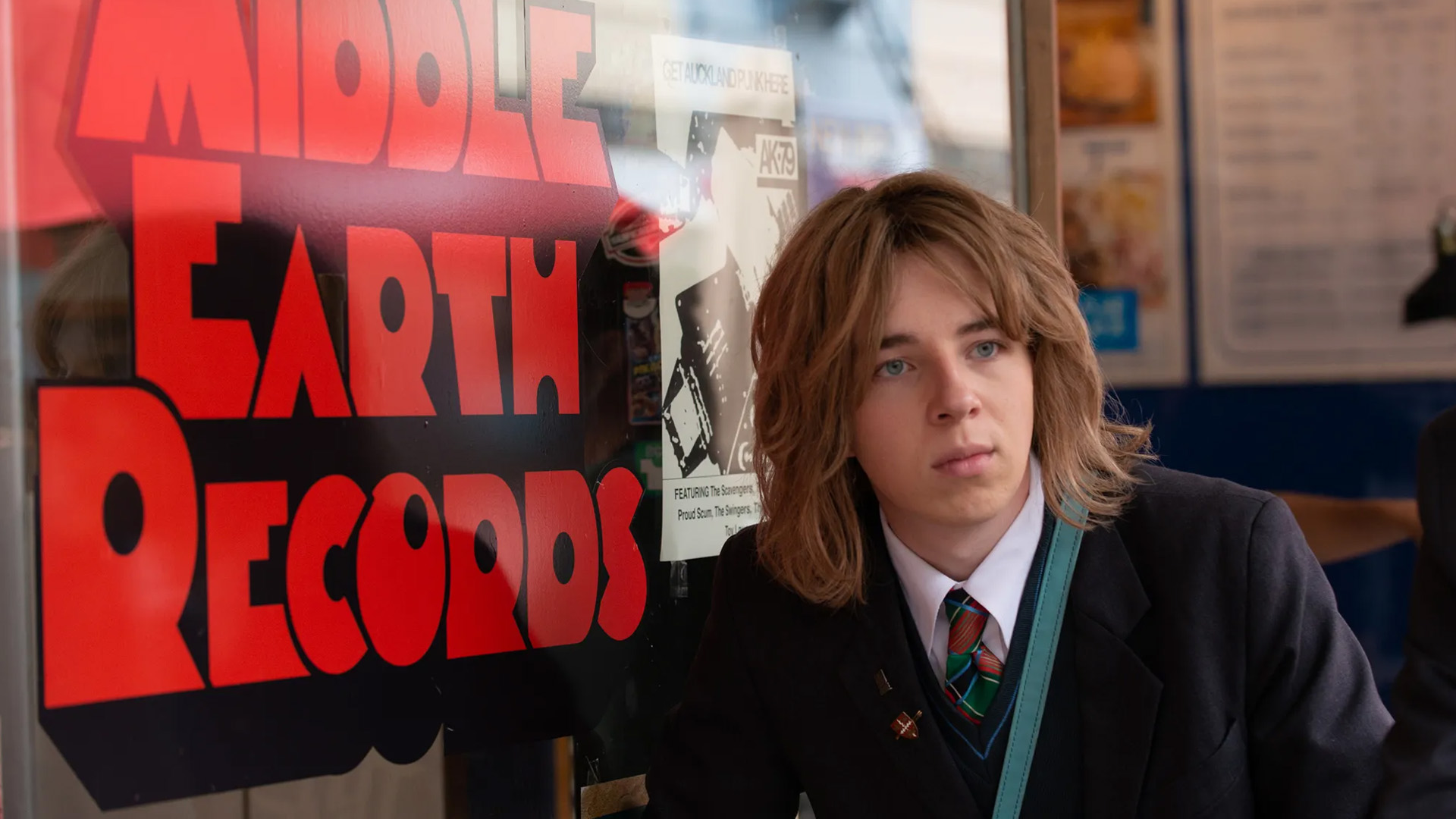
Head South
Christchurch music nerds born in the ‘60s would have found their new favourite film with director Jonathan Ogilvie’s coming-of-age tale. Set in ChCh’s underground post-punk scene of 1979, Paper Planes’ Ed Oxenbould plays a dweeb who really, really, really wants to be a music star. Fortunately, he lands a gig. Unfortunately, he doesn’t know how to play, well, anything. Fortunately x 2, he’s got Benee to help him out.
Though it played in NZ midway through 2024 as part of Whānau Mārama before its wider run at the end of October, The Guardian film critic Peter Bradshaw caught Head South at the start of the year, writing: “It’s a film which can’t quite absorb the intense seriousness of its final moments, but a sweet-natured entertainment nonetheless.”
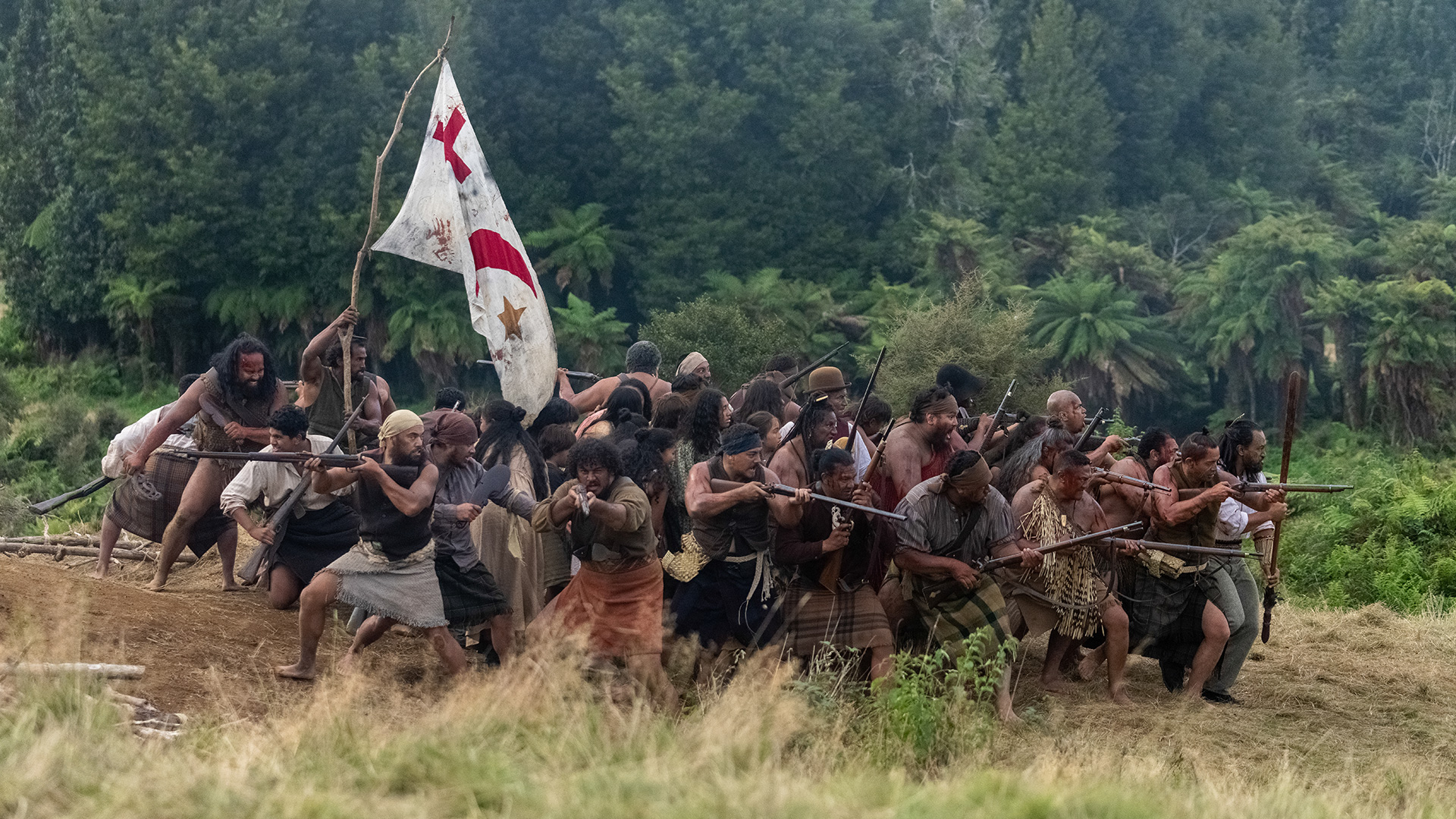
Ka Whawhai Tonu – Struggle Without End
Moving from The Musket Wars seen in The Convert to the New Zealand Land Wars, Michael Jonathan’s narrative feature debut expanded our view on Aotearoa’s history further with this affecting, cinematic depiction of the siege of O-Rākau. As Johnathan told me, the film spent many years in the making—the research, the writing, the funding, the COVID lag—but you could say the twinkle-in-the-eye moment came when the director first saw Utu.
“I was nine years old, watched it in the Taumarunui Regent Theatre with my mum… seeing Māori faces on the big screen, and falling in love with Merata Mita—that was my first film crush… It made me cry. It made me angry. It made me, as a nine-year-old, go through all these feelings. 40 years later, we’re making Ka Whawhai Tonu.”
In my review, I labelled it “a searing siege film with a soaring spirit to match… an experience that deserves to be seen immediately.” Many overseas also got that opportunity with the film doing the festival in Sydney, Hawaiʻi, and Toronto. Those still at home, however, can check out Ka Whawhai tonu mātou Ake, Ake, Ake! at the Te Awamutu Museum, an exhibition which runs until 30 April showcasing costumes from the film by Te Ura Taripo-Hoskins and photographs by Cinzia Jonathan.

The Lie
April saw the relatively quiet theatrical release of director Helena Coan’s documentary on the murder of Grace Millane. Lots of Kiwis will be familiar with the shocking 2018 crime which dominated local headlines, but any prior knowledge wouldn’t take away from the impact of Coan’s film, which compiles available evidence archival material to display the timeline of events in a largely unobtrusive fashion.
In filmmaking terms, its similar in technique to Jenny Popplewell’s American Murder: The Family Next Door, which told its horrific story entirely through firsthand footage. And like American Murder, The Lie found an audience through Netflix, topping the NZ chart the week it came to the streaming platform.
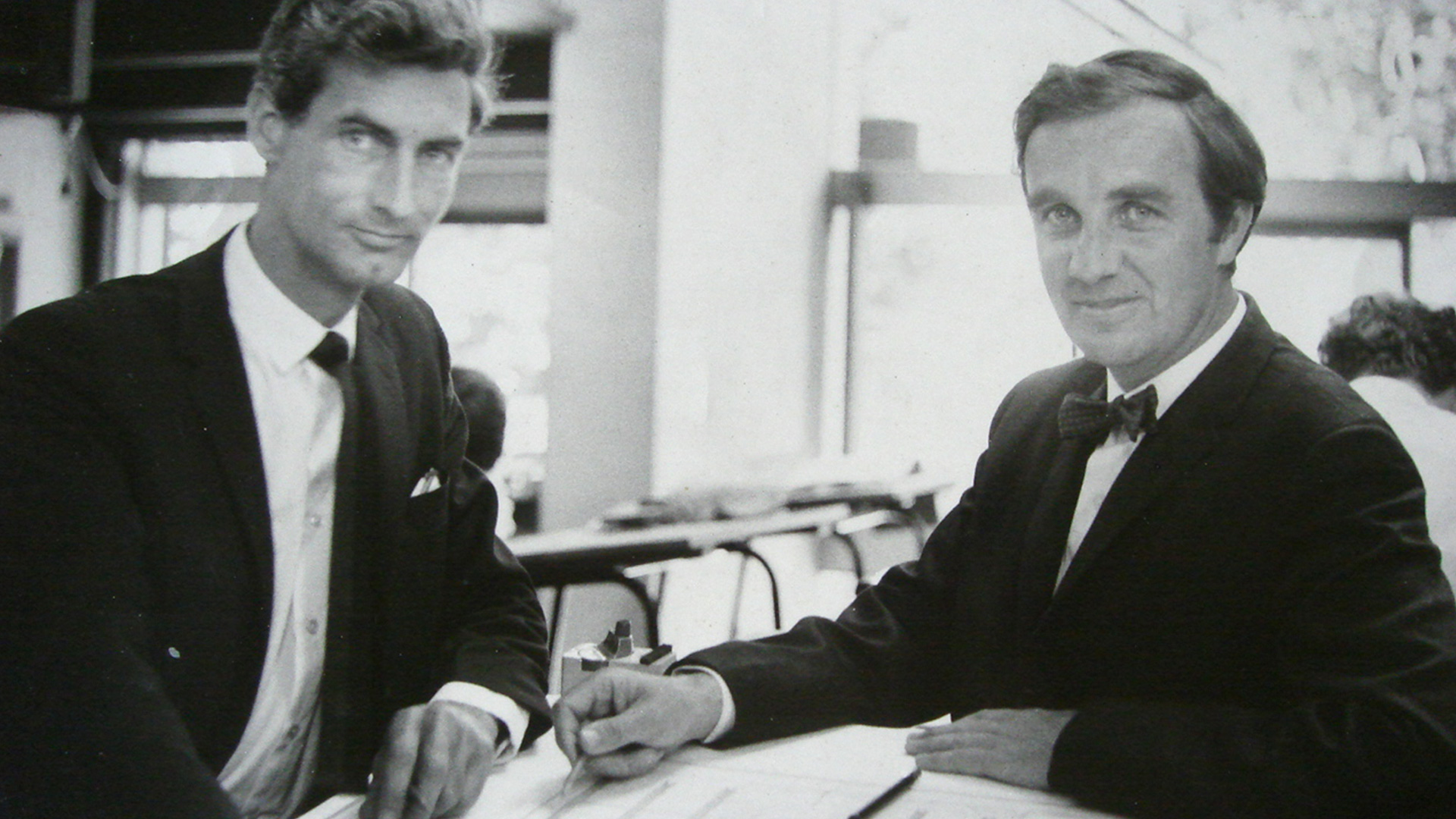
Maurice & I
Playing at both the Resene Architecture & Design Film Festival and the Architecture Film Festival Rotterdam, this modest documentary from directors Rick Harvie and Jane Mahoney returned to cinemas for a limited theatrical release in September. Both an exploration and a celebration, the film dives into the hugely influential architectural work of Sir Miles Warren and Maurice Mahoney—and their unique partnership.
Writing for Sunday Star Times, Graeme Tuckett praised the film: “There is a slew of New Zealand social history here, as well as a neatly condensed and focused history of architecture in the 20th century, all wrapped around a love letter to the city of Christchurch and a few of the people who have made it the place that it is.”
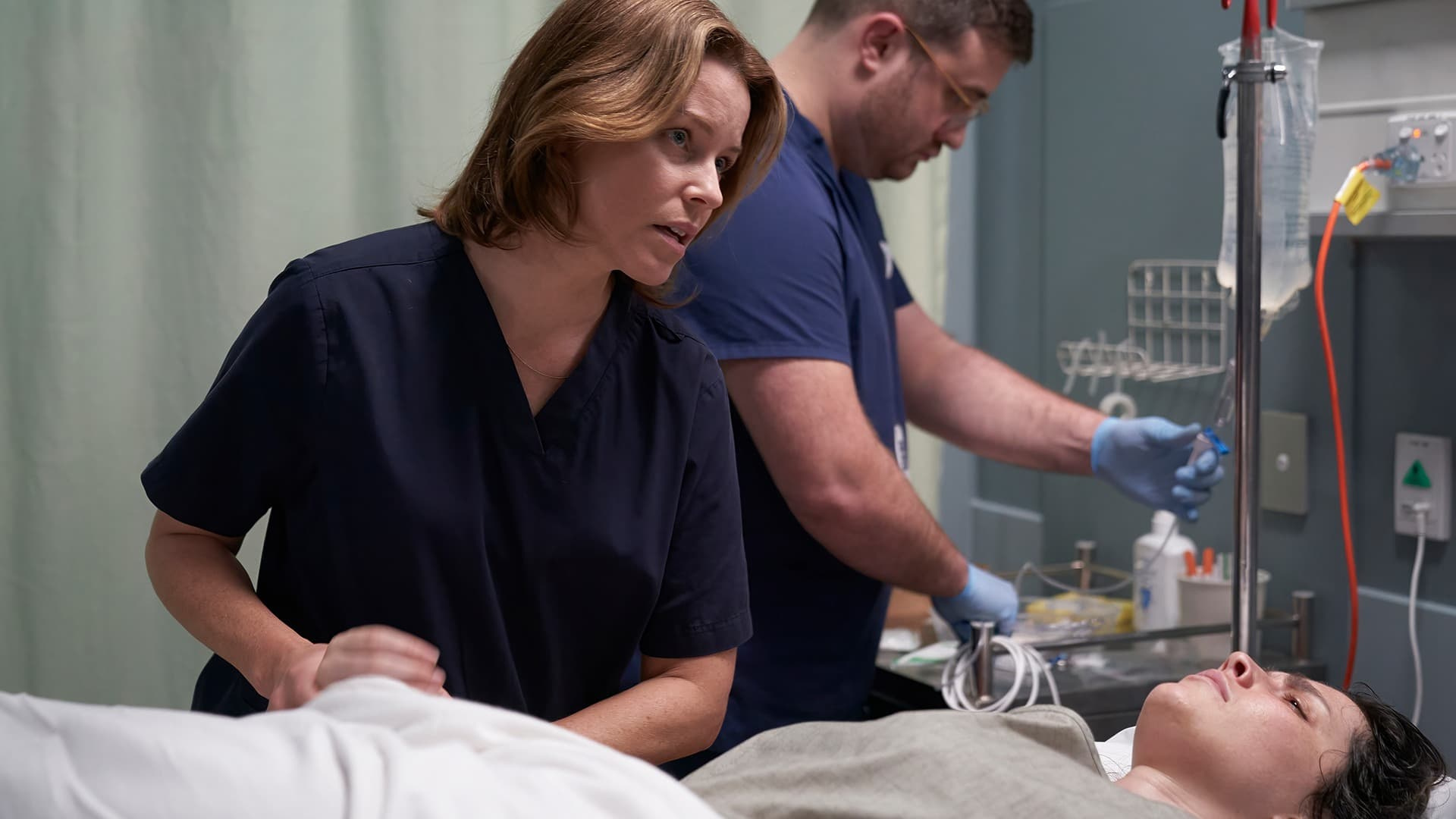
A Mistake
The latest from local filmmaking veteran Christine Jeffs played as part of Whānau Mārama before its wider theatrical release in October. An adaptation of Carl Shuker’s novel, the film stars Elizabeth Banks as a head surgeon involved in a procedure that goes tragically wrong for their patient, kicking off a domino effect of blame and vested interests that slowly swallows her life.
Though Banks can’t quite wrestle the 300kg octopus that is the Nu Zild accent, she nonetheless anchors the film with a performance that neatly illustrates the sternness of a medical professional who’s crumbling on the inside. Banks “really responded to the material,” Jeffs told Steve Newall. “She wanted to get stuck into the meaty dramatic part. Her performance is wonderful, and has really shown her dramatic chops in this role.”
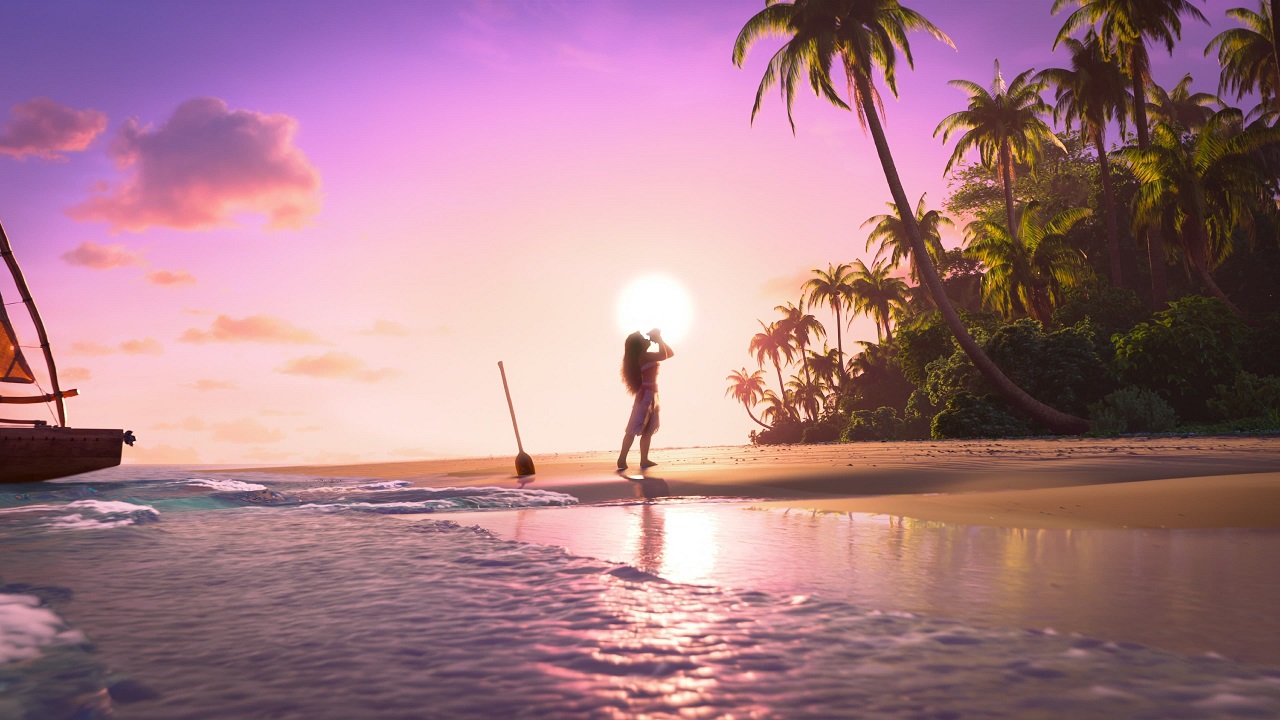
Moana 2 Reo Māori
One simply cannot ignore the work of Tweedie Waititi and crew in bringing Disney flicks into Te Ao Māori with their reo reworkings. Encanto Reo Māori opened in September, the Oscar-winning film about a big Colombian whānau being a natural fit. But with Moana 2 Reo Māori, a small but significant bit of history’s being made: it’s the first time both English and Reo Māori versions of a Disney animated film release to cinemas on the same day.
To fully understand the significance of these Reo Māori Disney films, I recommend this interview with Waititi about the release of The Lion King Reo Māori and how it’s much more than a translation.

The Moon is Upside Down
Local screen veteran Loren Taylor stood on both sides of the camera, starring in her own writing-directing feature debut alongside Victoria Haralabidou and Elizabeth Hawthorne. Releasing in May, the film tells a triptych of blackly comedic stories of disconnection and loneliness—the kind that feels very in-tune with our distant country.
“I’ve always adored a multi-plot film,” Taylor told me, directly referencing Milcho Manchevski’s Before the Rain. Her other inspirations included “that kind of painful comedy” from Maren Ade’s Toni Erdmann and the “magical kind of quality” of Alice Rohrwacher’s Happy As Lazzaro.
If that all sounds like a rare combo for a New Zealand film, that’s because it is. The Moon is Upside Down is a total standout in that regard, with Taylor showing breathless confidence in her direction with material we rarely see from this country. The film earned props overseas too, winning Best First Feature at the 2023 Tallinn Black Nights Film Festival and the Special Jury Award for Narrative Feature at the 2024 Santa Fe International Film Festival.
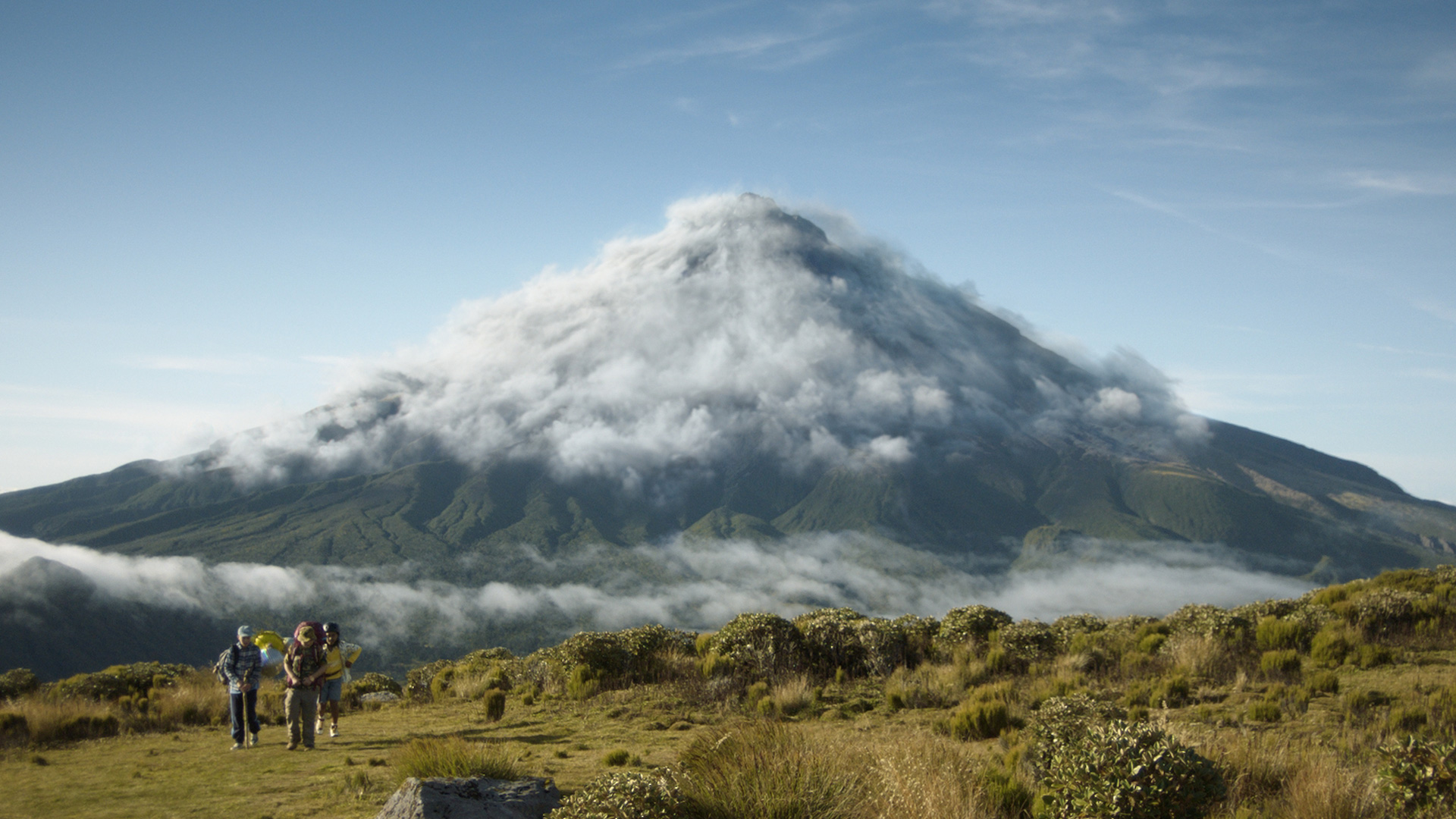
The Mountain
March welcomed screen veteran Rachel House’s directorial debut, a family adventure reworked from an original screenplay by Tom Furniss (who delivered a cracking short film this year called Rochelle), centred on a girl with cancer who seeks to embrace her Māori ties and the guidance of Taranaki Maunga (who gets top billing). On the way to the mountain, she’s joined by two local boys who harbour their own reasons for joining her quest.
There’s an intrinsic value to the film, I argued when the film came out, as it’s incredibly rare for Aotearoa to produce a cinema-worthy film for the whole whānau. “Both a rare kind of kids film and a rare breed of New Zealand cinema worth remembering,” were my words. The Toronto International Film Festival clearly had similar feelings, selecting the film to play as part of TIFF Next Wave Selects.
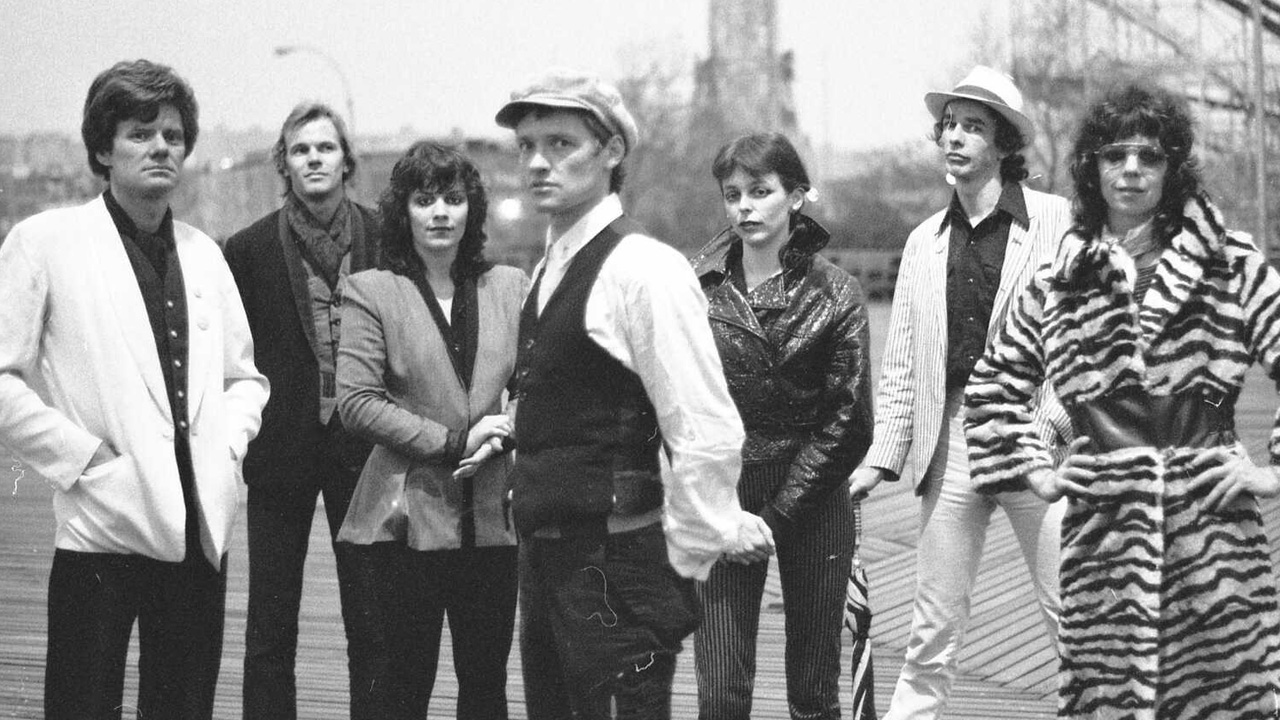
Red Mole: A Romance
Returning from NZIFF 2023 for a limited theatrical run in February, director Annie Goldson’s portrait of boundary-pushing New Zealand theatre troupe Red Mole captured not only the compelling characters who fuelled the creative collective, but also an era that drove their rebellious performances.
Upon the film’s release, I wrote a piece celebrating Goldson as one of NZ film’s quiet achievers. It includes a list of her previous praise-worthy films in which Red Mole: A Romance stands firmly beside them.
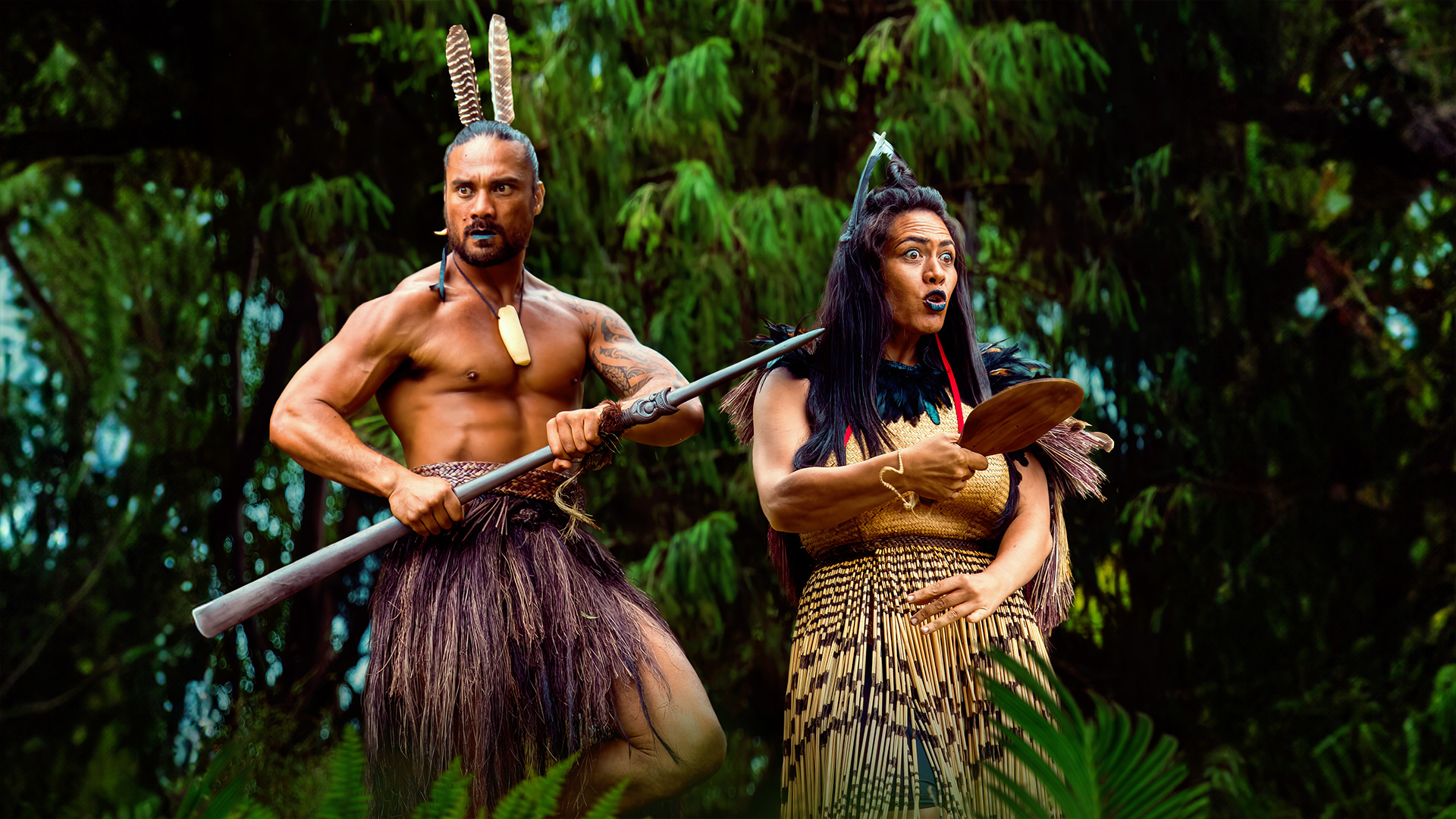
Taki Rua Theatre: Breaking Barriers
Making its World Premiere at Whānau Mārama, this documentary on kaupapa Māori theatre company Taki Rua Productions returns for a limited theatrical release end of November. Directed by one of the original members, Whetū Fala, the film dives into the origin of the groundbreaking group and its transformation over the last 40 years.
In an inspired move, the film restages scenes from select plays in outdoor settings. “I had to persuade a lot of people to let me do this,” Fala told me in our chat. “They were like, ‘It’s theatre, so it must be in the theatre.’ There was a lot of pushback [from] our own community, taking ourselves far too seriously. But if you look at the kaupapa of the film… our first theatre is outside. It’s the ngāhere. It’s the ocean. That’s our stage. It was a no-brainer, from a Māori point of view and from a theatre point of view—the Greeks and the Romans had the amphitheatres.”
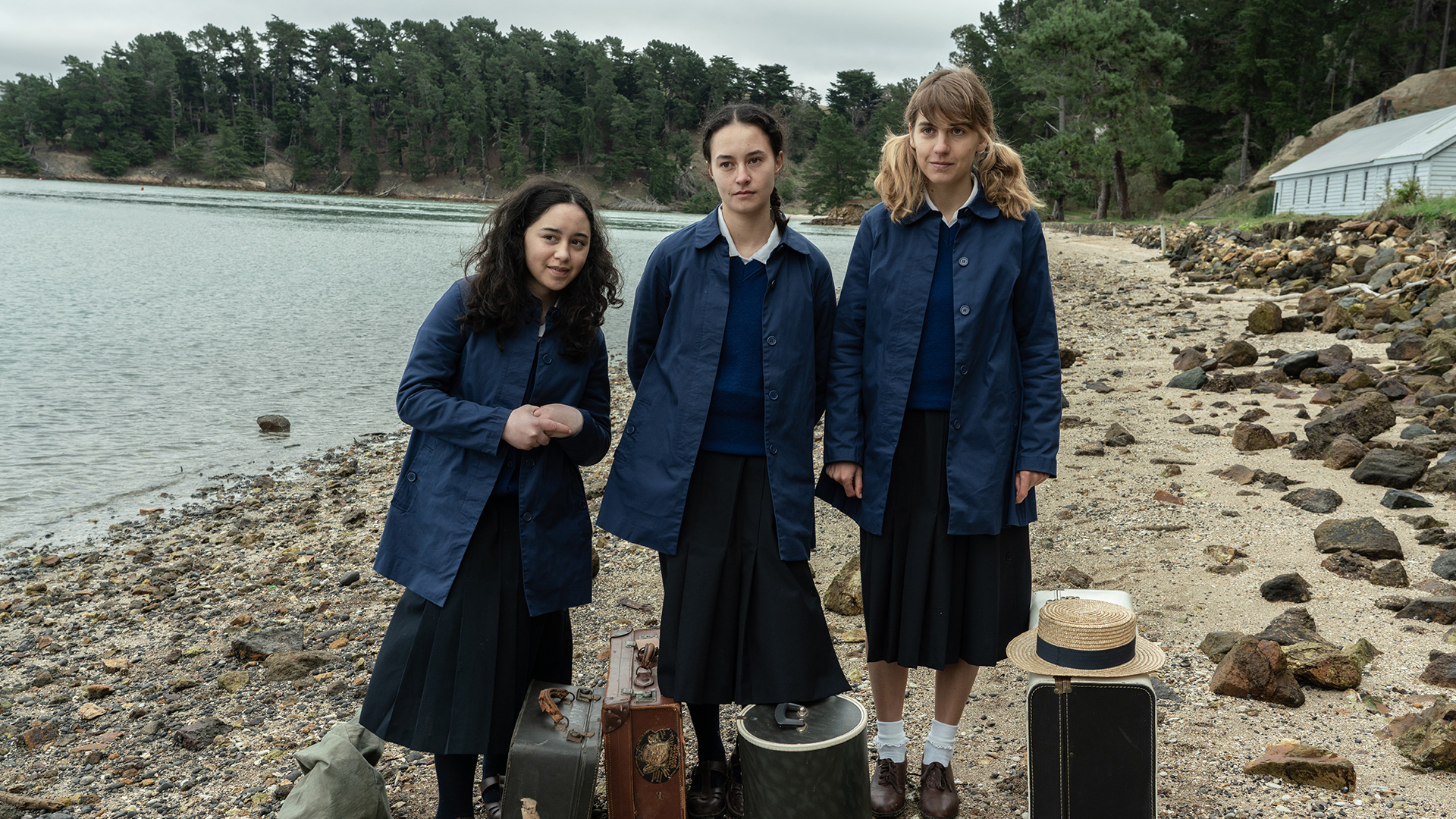
We Were Dangerous
Before it opened this year’s Whānau Mārama, Josephine Stewart-Te Whiu’s feature debut came hot off the heels of a big awards win: the Special Jury Award for Filmmaking (Narrative Feature) at SXSW. To quote myself, “the film finds a roaring light within the camaraderie of its three excellent leads,”—Erana James, Nathalie Morris & Manaia Hall—playing a trio in 1954 New Zealand looking to make a great escape from their confines: a remote island institute for delinquent girls.
The film elegantly walks a tough tightrope, balancing our country’s heavy history with the lightness of friendship. It’s neither too bleak nor too fluffy, and Stewart-Te Whiu broke her process down excellently when I interviewed her. She also detailed her approach to directing young actors, the malleability of the script, finding the right island, and the general excellence of Rima Re Wiata.










